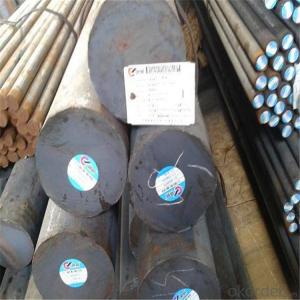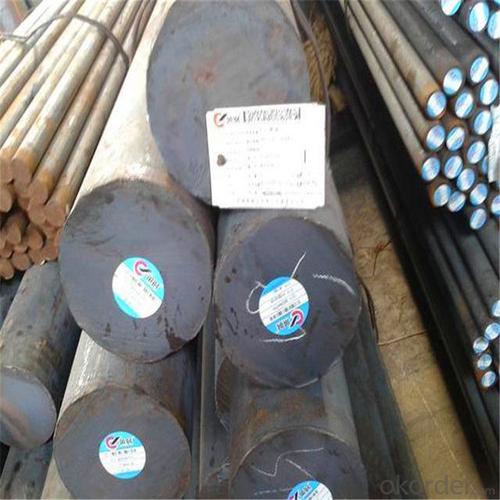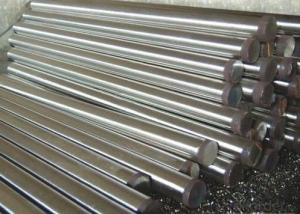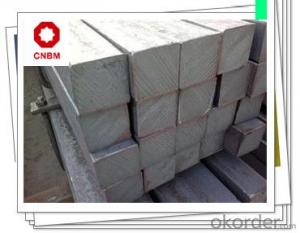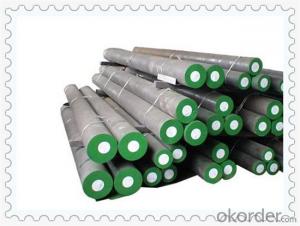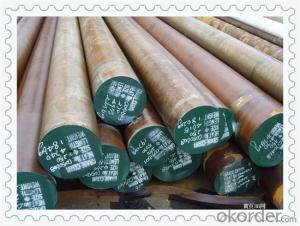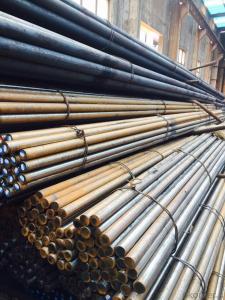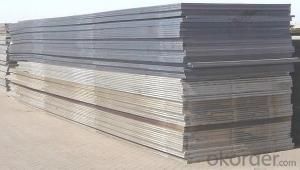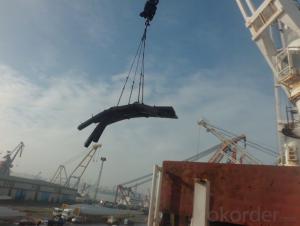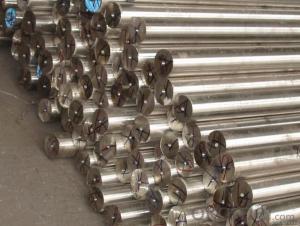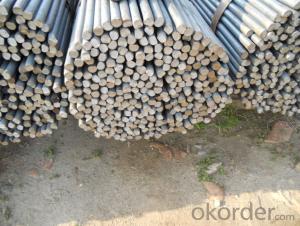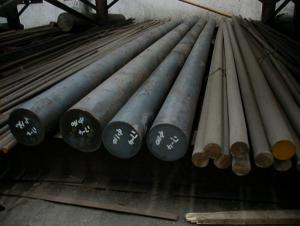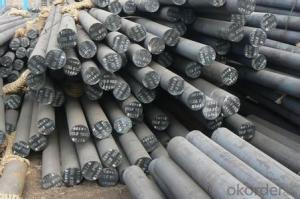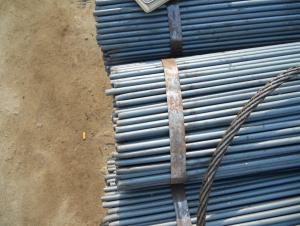Hot Rolled Carbon C22 Steel for Construction
- Loading Port:
- Tianjin
- Payment Terms:
- TT OR LC
- Min Order Qty:
- 25 m.t.
- Supply Capability:
- 500000 m.t./month
OKorder Service Pledge
OKorder Financial Service
You Might Also Like
Specification
Hot Rolled Carbon C22 Steel for Construction
Product Description of Hot Rolled Carbon C22 Steel for Construction
1. Steel grade: SAE1020, 20#, C22, S20C
2. Length: 6M-12M
3. Diameter: 16mm-300mm
4. Product range: round bar, flat bar, square bar
5. Technique: Hot rolled, forged, cold drawn
Specification of Hot Rolled Carbon C22 Steel for Construction
Material | C22 | Round bar | Dia(mm) | 16-300mm |
Process | EAF + LF + VD + Forged + Heat Treatment (optional) | Length (mm) | Max 12m | |
Heat treatment | Normalized / Annealed / Quenched / tempered | Flat bar | Thickness(mm) | 8-500mm |
Delivery condition | Hot forged +Rough machined (black surface after Q/T)+ Turned (optional) | Width(mm) | 70-200mm | |
Test | Ultrasonic test according to SEP 1921-84 D/d | Length (mm) | Max 12m |
Chemical Composition of Hot Rolled Carbon C22 Steel for Construction
C | Si | Mn | Cr | Ni | Cu |
0.17~0.23 | 0.17~0.37 | 0.35~0.65 | ≤0.25 | ≤0.30 | ≤0.25 |
Photo Show of Hot Rolled Carbon C22 Steel for Construction
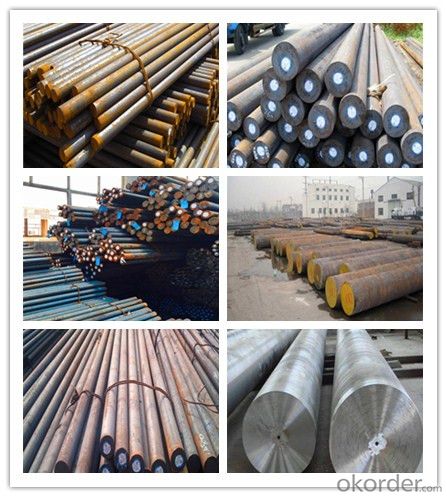
Packing and Delivery:
Packing in bundle package, or as customer's requirements.
Delivery Detail: 45 days after receiving the deposit.
Usage and Applications of Hot Rolled Carbon C22 Steel for Construction
1. Steel round bar is used in a large number of architectural and engineering structures. Or it can be used in construction of plants for the production of steel house frames, high-voltage transmission towers, bridges, vehicles, boilers, containers, ships, etc.
2. And we can use this kind of product on the performance of the mechanical parts if the demand is not very high.
3. Some special material steel round bar can be used for main shaft of steamer, hummer shank, with big section and supper force.
Company Information
CNBM International Corporation is the most important trading platform of CNBM group.
Whith its advantages, CNBM International are mainly concentrate on Cement, Glass, Iron and Steel, Ceramics industries and devotes herself for supplying high qulity series of refractories as well as technical consultancies and logistics solutions.


F A Q
1, Your advantages?
professional products inquiry, products knowledge train (for agents), smooth goods delivery, excellent customer solution proposale
2, Test & Certificate?
SGS test is available, customer inspection before shipping is welcome, third party inspection is no problem
3, Factory or Trading Company?
CNBM is a trading company but we have so many protocol factories and CNBM works as a trading department of these factories. Also CNBM is the holding company of many factories.
4, Payment Terms?
30% TT as deposit and 70% before delivery.
Irrevocable L/C at sight.
5, Trading Terms?
EXW, FOB, CIF, FFR, CNF
6, After-sale Service?
CNBM provides the services and support you need for every step of our cooperation. We're the business partner you can trust.
For any problem, please kindly contact us at any your convenient time.
We'll reply you in our first priority within 24 hours.
- Q: What is the difference between a solid steel round bar and a hollow steel round bar?
- The main difference between a solid steel round bar and a hollow steel round bar lies in their composition and structural design. A solid steel round bar is a cylindrical rod made entirely of solid steel material, whereas a hollow steel round bar features a hollow center, creating a tubular structure. This difference in design impacts their weight, strength, and application. Solid steel round bars tend to be heavier and more robust, making them suitable for applications that require high strength and durability. On the other hand, hollow steel round bars are lighter and provide more flexibility in terms of design and application. They are often used in situations where weight reduction is necessary or for applications that require the passage of fluids or wiring through the bar's hollow center.
- Q: How many positive and negative tolerances are allowed for round steel GB?
- Round steel is a solid strip of steel whose cross section is round. The specifications are expressed in millimeters of diameter, such as "50", which means a round bar of 50 millimeters in diameter. Round bar is divided into three parts: hot rolling, forging and cold drawing. Standard Specification for hot rolled round steel is 5.5-250 mm. Among them, 5.5-25 mm small round bars are mostly supplied by straight strips. They are used as reinforcing bars, bolts and various mechanical parts. They are more than 25 millimeters of round steel. They are mainly used in the manufacture of mechanical parts or seamless steel tube billets
- Q: Are steel round bars available in custom sizes?
- Yes, steel round bars are available in custom sizes. Steel round bars can be manufactured to meet specific size requirements and specifications. Custom sizes can be requested based on the diameter, length, and overall dimensions of the round bar. Whether it is for a specific project or application, many steel manufacturers and suppliers offer the option to customize the size of round bars to suit individual needs.
- Q: How do you calculate the torsional strength of a steel round bar?
- To calculate the torsional strength of a steel round bar, you need to consider its material properties, such as the shear modulus and the cross-sectional area of the bar. The torsional strength can be determined using the formula T = (G * J * tau) / L, where T is the torsional strength, G is the shear modulus, J is the polar moment of inertia, tau is the shear stress, and L is the length of the bar.
- Q: Are steel round bars suitable for electrical conductivity?
- Steel round bars are generally not recognized for their ability to conduct electricity. While steel is a proficient conductor of heat, its electrical conductivity is relatively inferior when compared to metals like copper or aluminum. The primary reason for this disparity is that steel is primarily composed of iron, which is known for its inadequate electrical conductivity. However, by incorporating specific alloying elements like chromium or nickel, the electrical conductivity of steel can be enhanced. This improvement allows steel to be more suitable for applications that necessitate electrical conductivity. Nevertheless, if a high level of electrical conductivity is of utmost importance, materials like copper or aluminum are typically favored over steel round bars.
- Q: How do you store excess steel round bars?
- In order to maintain the longevity of excess steel round bars and prevent any damage, it is imperative to adhere to specific guidelines. Here are several measures that can be implemented: 1. It is essential to thoroughly clean and examine the steel round bars prior to storage. Remove all traces of dirt, grease, or moisture from the surface to hinder corrosion. 2. Opt for an appropriate storage location. Ideally, select a well-ventilated, dry area with stable temperatures. Avoid areas that are susceptible to moisture, extreme heat, or direct sunlight when storing the bars. 3. Implement the use of racks or pallets for bar storage. Arrange them horizontally, one on top of the other, ensuring there is ample space between each layer to prevent any deformation or bending. 4. If the bars are to be stored outdoors, ensure they are covered with a waterproof tarp or a protective coating to safeguard against rain, snow, and other elements. 5. Refrain from placing excessive weight on top of the bars to prevent deformation. Additionally, exercise caution regarding any sharp objects or edges in close proximity that could potentially cause damage. 6. Regularly inspect the stored bars to detect any signs of corrosion, rust, or other damage. If any issues are identified, promptly address them by taking the necessary measures. It is crucial to bear in mind that proper storage is paramount to preserve the quality and integrity of the steel round bars. By adhering to these guidelines, one can ensure that the excess steel round bars remain in optimal condition until they are required for future use.
- Q: Can steel round bars be used in the manufacturing of garden tools?
- Yes, steel round bars can be used in the manufacturing of garden tools. Steel is a durable and robust material that offers strength and resistance, making it suitable for various garden tools such as shovels, rakes, hoes, and spades. The round bars can be shaped and formed to create the desired tool design and functionality, ensuring durability and longevity in outdoor conditions.
- Q: What are the advantages of using low-alloy steel round bars?
- One advantage of using low-alloy steel round bars is its increased strength and durability compared to regular carbon steel. This makes it suitable for applications that require high tensile strength and resistance to wear and tear. Additionally, low-alloy steel round bars generally offer better weldability and machinability, allowing for easier fabrication and modification. Overall, low-alloy steel round bars provide a cost-effective solution for various industries, including construction, automotive, and manufacturing.
- Q: What are the different types of steel round bar alloys used in aerospace applications?
- The different types of steel round bar alloys used in aerospace applications include stainless steel, nickel-based alloys, and titanium alloys. These alloys are chosen for their high strength-to-weight ratios, corrosion resistance, and ability to withstand extreme temperatures and pressures encountered in aerospace environments.
- Q: What are the advantages of using heat-resistant steel round bars?
- The advantages of using heat-resistant steel round bars include high thermal stability, excellent resistance to oxidation and corrosion at elevated temperatures, superior strength and toughness, and the ability to retain their mechanical properties even under extreme heat conditions. Heat-resistant steel round bars also have good dimensional stability, making them suitable for applications in high-temperature environments such as furnace components, heat exchangers, and power generation equipment.
Send your message to us
Hot Rolled Carbon C22 Steel for Construction
- Loading Port:
- Tianjin
- Payment Terms:
- TT OR LC
- Min Order Qty:
- 25 m.t.
- Supply Capability:
- 500000 m.t./month
OKorder Service Pledge
OKorder Financial Service
Similar products
Hot products
Hot Searches
Related keywords
